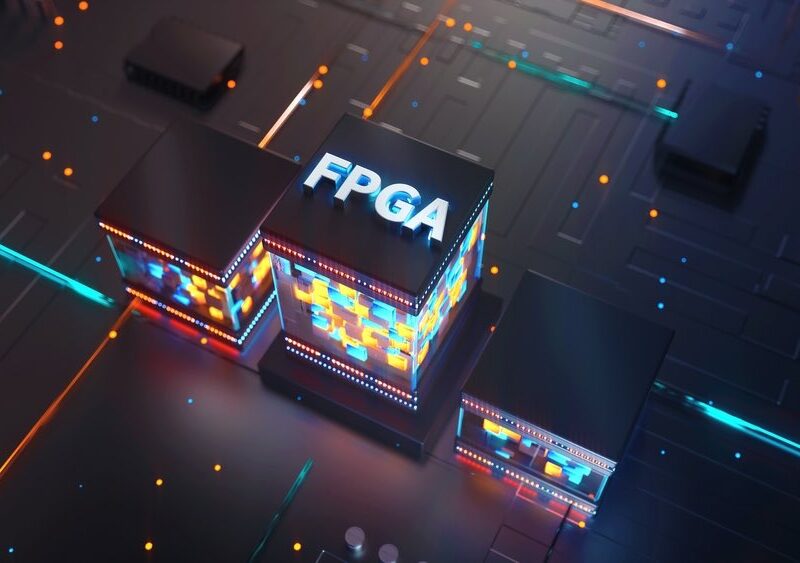FPGA and microcontroller technology: similarities and differences

FPGA vs Microcontroller Technology Similarities and Differences
In the ever-changing world of embedded systems, choosing the right platform can be crucial for a project. The two most commonly used technologies – field programmable gate arrays (FPGAs) and microcontrollers (MCUs) – have their own unique advantages. But how do they compare and which one should you choose for your next application?
In this guide, we will look at the similarities and differences between FPGA and microcontroller technologies, including applications, performance characteristics and how to choose the right technology. We will also introduce you to the high-quality FPGA and microcontroller components offered by DRex Electronics to help you get started.
🧠 What is a microcontroller?
A microcontroller (MCU) is a compact integrated circuit that contains a processor, RAM, ROM/flash memory and peripherals such as timers, ADCs and communication interfaces on a single chip. MCUs are designed to perform sequential tasks in a wide range of applications such as consumer electronics, home appliances, automotive systems and industrial control equipment.
👉 Explore the full range of microcontrollers from brands such as STM32, Microchip and NXP DRex Electronics.
🔧 What is an FPGA?
An FPGA( Field Programmable Gate Array) is a reconfigurable silicon chip consisting of multiple logic blocks and routing resources. Unlike MCUs, which run on software, FPGAs are programmed with a hardware description language (HDL ) such as Verilog or VHDL to perform parallel processing tasks and create customised digital circuits.
Looking for Xilinx, Intel (Altera) and Lattice FPGAs? We have them available at DRex Electronics.
📊 FPGA vs Microcontroller: Key Differences
Feature Microcontroller (MCU) FPGA (Field Programmable Gate Array)
Architecture Fixed CPU-based, executes instructions Programmable logic blocks, no fixed CPU
Programming C/C++ (firmware) Verilog/VHDL (hardware description)
Processing Sequential (one task at a time) Parallel (multiple tasks simultaneously)
Speed Slower for data-heavy operations High-speed logic, ideal for real-time processing
Flexibility Limited to built-in peripherals Fully customizable architecture
Development Time Faster and easier for basic tasks Longer learning curve and development cycle
Power Usage Lower, optimized for efficiency Typically higher, but improving with new models
Cost Lower for simple applications Higher for small volumes or high-end FPGAs
Similarities between MCUs and FPGAs
Despite their differences, MCUs and FPGAs share many similarities:
✅ Both can be used in embedded systems.
✅ Both support GPIO, timers, UART, SPI, I²C, etc. ✅ Both can be used in embedded applications.
✅ Both can be used in automation, control systems and sensor interfaces.
✅ Both are programmable and support advanced development tools.
🛠️ When should a microcontroller be used?
Choose the MCU if your application requires it:
Low power consumption
Simplicity (e.g. sensor reading, motor control).
Economical for mass production
Fast development cycle
Easy to use, low power consumption – Easy to configure, easy to install – Support for operating systems or real-time operating systems (RTOS).
✅ Example:
Intelligent Home Appliances
Mobile devices
Automotive control modules
Industrial monitoring sensors
FPGA vs Microcontroller Technology Similarities and Differences2
🚀 When should you use FPGAs?
Choose an FPGA if your project requires the following features
Fast signal processing
Real-time data collection and response
Custom digital logic (e.g. protocol emulation, image processing)
Parallel computing or simultaneous execution of multiple tasks
Hardware security or encryption
✅ Example:
5G baseband processing
Real-time video/image processing
High frequency trading systems
Custom hardware accelerators (AI/thinking)
⚡ Mixed solutions: MCU + FPGA
Many modern systems use both MCUs and FPGAs:
The MCU deals with control logic and communication.
MCUs and FPGAs deal with communication and control. FPGAs deal with real-time processing or data-intensive tasks.
Examples are
SDR (Software Defined Radio).
Intelligent motor control systems
Robots with sensor interconnection capabilities
Automotive ADAS platforms
👉 DRex Electronics for MCU and FPGA hybrid applications.
🧰 Development tools and ecosystems
Platforms Microcontrollers FPGAs
Integrated development environments STM32CubeIDE, MPLAB X, Arduino IDE Vivado (Xilinx), Quartus (Intel), Lattice Diamond.
Languages C, C++, VHDL, Verilog.
Course Beginner Intermediate to advanced
Arduino, STM32 Nucleo, ESP32, Xilinx Zynq, Lattice ICE40, DE10-Nano.
👉 Get familiar with development kits, programming tools and cables to get started on your next project.
🛒 Where to buy microcontrollers and FPGAs?
DRex Electronics offers:
Genuine FPGAs and MCUs from trusted brands such as Intel, Xilinx, STMicroelectronics, NXP and Microchip.
Complete kits for design, prototyping and evaluation.
Components such as flash memory, oscillators and voltage regulators.
✅ Expert support for OEMs, educators, start-ups and engineers.
View our full range of processors and programmable logic products today.
✅ Conclusions
There is a place for both FPGAs and microcontrollers in modern electronics , and the choice between them or the use of both depends on performance needs, development schedule and system complexity.
Whether you are developing a low-cost sensor platform or a custom high-speed accelerator, understanding the fundamental differences between these technologies will help you develop more advanced and scalable systems.
🔧 Ready to start developing?
Visit DRex Electronics to find high-performance FPGAs, general-purpose MCUs and all the components you need to turn your ideas into reality .
